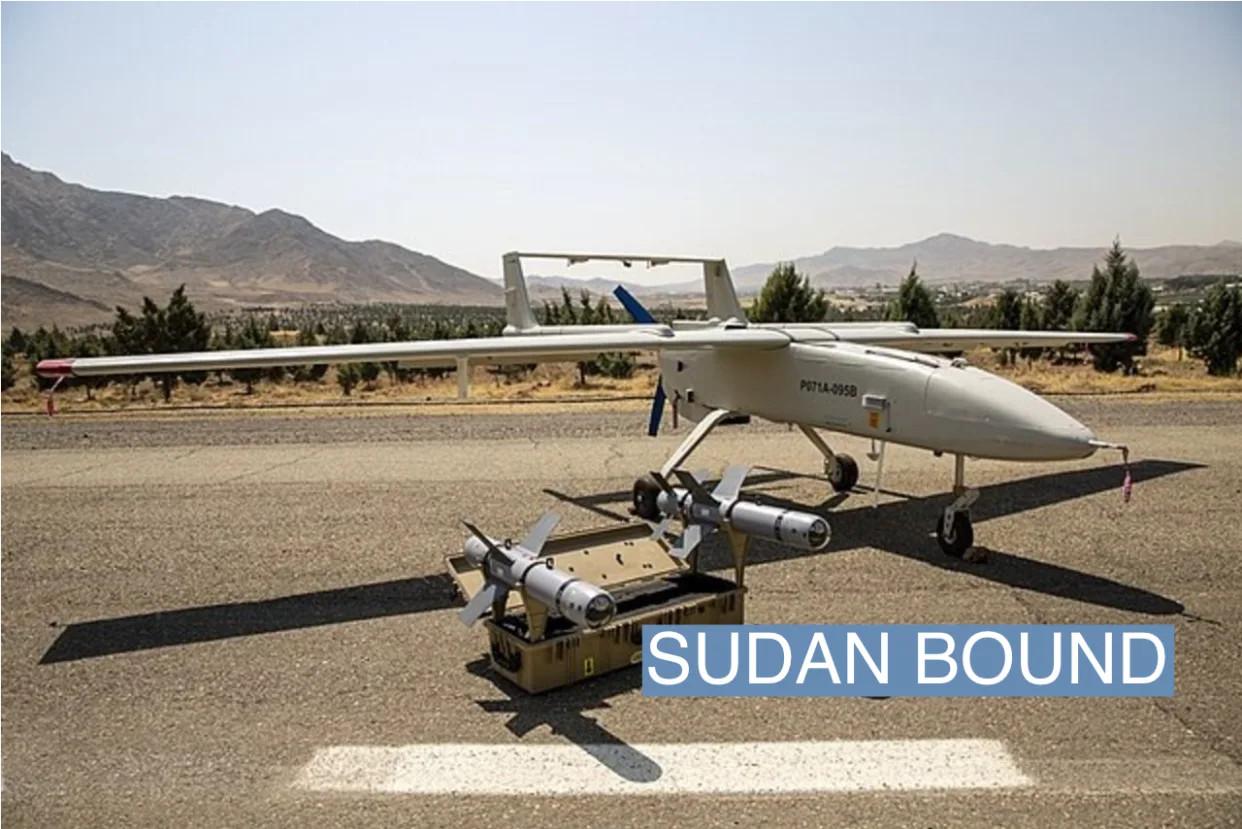
Iran sending attack drones to Sudan’s military
Iran is stepping up shipments of attack drones to the Sudanese military, further internationalizing the North African country’s civil war and potentially providing Tehran with a new ally through which to project power into the Red Sea, U.S. and Arab officials tell Semafor.
The Sudanese Armed Forces (SAF) has been locked in a nearly year-long conflict with the rebel Rapid Support Forces (RSF) that has split the country and spilled into neighboring countries like Chad and South Sudan. The war provided Iran with an opening last October to reestablish diplomatic relations with the Khartoum government for the first time since 2016 and potentially end Sudan’s strategic shift towards the West.
The country, previously designated by the U.S. as a state sponsor of terrorism, significantly improved its ties with Washington during the Trump administration and agreed in 2020 to establish diplomatic relations with Israel. Sudan’s worsening civil war, which has included the targeting of civilians, however, has halted these steps towards normalization. And the Biden administration imposed new sanctions on both the SAF and RSF in recent months.
As part of Iran’s bolstered ties with Khartoum, Tehran has begun sending attack drones to the SAF in recent months, U.S. and Arab officials familiar with the intelligence told Semafor. The SAF is expected to deploy the Mohajer-6 drones to try and block RSF offensive operations that have allowed the rebels to gain control of large swathes of central and western Sudan, as well as much of Khartoum, over the past year. The Sudanese government and the SAF’s commander, General Abdel Fattah al-Burhan, are largely based today out of Port Sudan on the Red Sea.
U.S. and Arab officials said they believe Iran aims to use its relations with the SAF to bolster Tehran’s regional alliances and allow the country to project more power into the strategic waterways in the Red Sea. Prior to Sudan’s 2016 revolution, under dictator Omar al-Bashir, Iran used the North African country as a conduit through which to move arms to allied Palestinian militias fighting Israel from the Gaza strip, including Hamas and Palestinian Islamic Jihad. Iran sent military supplies both via the Red Sea and overland through Sudan and Egypt, according to Israeli officials.
Iran has also used the Red Sea to increase pressure on Israel and the U.S. following Hamas’s October 7 terrorist attack on southern Israel and the ensuing war. The Yemen-based Houthi militia, which receives drones, cruise missiles and intelligence from Tehran, has regularly been targeting Western commercial ships moving through the Red Sea. And Sudan could provide Tehran with another foothold to strengthen its regional position and potentially impede maritime traffic.
Jay’s view
The Gaza war has made Iran’s regional network of allies, known as the Axis of Resistance, front-page news. But the reality is that Tehran has been building up this coalition for decades. And gaining leverage, if not control, over the Middle East’s strategic waterways – including the Persian Gulf, Suez Canal, and Bab-el-Mandeb Strait – is a central feature of Iran’s strategy.
The Houthi attacks in recent months on ships moving through the Red Sea – which need to transit the Suez Canal to reach Europe – has threatened the entire global economy. Many commercial lines, wary of being targeted by Houthi drones and missiles, have redirected their ships to travel south around the Horn of Africa to reach European markets and the U.S. This significantly raises shipping costs and time.
The U.S. and U.K. have launched a sustained campaign of military strikes against Houthi targets in recent weeks in an effort, which has been only partially successful, to free up Red Sea trade. But U.S. and Mideast officials believe Iran views Sudan as providing a second front from which to challenge U.S. and allied navies in the Red Sea. Sudan sits directly across the waterway from Yemen.
Middle East and Africa analysts believe Sudan’s civil war could potentially split the country. And militias and warlords that are only nominally under either the SAF or the RSF control large parts of Sudanese territory. Iran has proven adept in recent decades of using such instability to build up allied militias in countries like Iraq, Syria and Yemen. Analysts say a similar model could be employed in Sudan.
“Given the ways in which Iranian influence has grown elsewhere in the region, there are fears that the Sudanese army, with its Islamist orientation, will morph into a militia group similar to the Iraqi Popular Mobilization Forces, ultimately exerting Iran’s will in exchange for funding and military support,” wrote Areej Elhag, a Sudanese security analyst, last month.
The View From Iran and Sudan
Iranian and Sudanese officials have hailed the resumption of their diplomatic relations in recent months, but haven’t publicly disclosed any military cooperation.
Iranian Foreign Minister Hossein Amir-Abdollahian welcomed his Sudanese counterpart to Tehran earlier this month as part of a process aimed at reopening each country’s embassy. And, according to Iranian state media, the Iranian envoy highlighted Tehran’s experience in industrial and technical-engineering services, as well as medical and pharmaceutical products, as being available to Sudan.
Sudan’s Foreign Minister Ali Al-Sadiq has also promoted Khartoum’s new relationship with Iran. But he’s stressed that this doesn’t need to come at the cost of Sudan’s ties with other nations. “Relations between countries are not static,” Al-Sadiq said, according to the Sudan News Agency. “This resumption follows a period of separation, and it is a normal course of action in international diplomacy.”
Source » msn





